#baybayin handwriting stroke order
Text
How I Write Baybayin (Handwriting and Straight-cut Nib Calligraphy) Subtitle: This is a freaking long-ass post so be warned now
You can read the entirety of this post as is, or you can go straight to the calligraphy portion. It’s at the end of the post (sorry dunno how to link that portion here).
Writer’s Note: First and foremost, I will advise everyone who reads this somewhat master post that I am not an authority when it comes to how baybayin is written, as what you shall be reading is just based mostly on my own experiences on how the characters are written and comparing them with other writing systems that are based on syllables rather than individual letters, like the Japanese Kana and the Korean Hangul, among others. This is because baybayin are not technically letters (individualized, can’t stand alone, only comes either as vowel or consonant but not both, you get the picture), but rather are syllables (i.e. the consonants have free vowels with them lol) that form words.
Also, as far as I know regarding how the baybayin texts are originally written pre-Hispanic colonization era, some of the written texts in the Philippines (or at least, those that survived, or I remember seeing in old history books) were written from right to left, top to bottom. This also coincides with other writing methods in some parts of Asia that also read from right to left. The technique of writing and reading from left to right may be a Western invention, in my opinion so I just did some of the strokes in the baybayin characters go from right to left, except for the straight-cut nib section. Again, I am no authority so I’m just doing what I think makes sense to me, as there is no existing ANCIENT written rules on the stroke order of the baybayin. Other people may disagree with my stroke orders here due to various reasons, but if you’re into what I did then feel free to learn from them, for free. *heart*
This author’s other notes: I won’t be elaborating the history of baybayin here because that would take around (counts how many years I spent in school) 5ever as it basically intertwines with the “current” history of the Filipino people. I put quotes on “current” because every decade or so, some written histories get re-written based on some evidences or what, and I totally respect that. It’s like in scientific papers: legit today, debunked tomorrow. And it’s completely OK, because THE MORE YOU KNOW~
Also this author’s note: I keep calling baybayin alibata, because that’s what they were called when I was a kid and how it was taught by history teachers before the process called “being politically-correct” became the norm. It’s because alibata was supposedly an incorrect term which signifies that the characters were letters based on Arabic, but apparently it wasn’t so.. Yeah. I’m just saying, so the kiddies would know. And if you’re like me who also refers to baybayin as alibata, let’s get a high-five! (Cause you’re also old, but gold =D) Some biased history FTW lol ok let’s get started.
Handwriting Alibata Baybayin Strokes with a Bamboo pen (or Ballpen, or Pencil, w/e floats your boat)
OK, before I start I would be first putting here the somewhat traditional ordering of the baybayin, which is:
A BA KA DA E GA HA I LA MA NA NGA O PA RA SA TA U WA YA
As well as the borrowed/loan syllables (which correspond to C, F, J, Ñ, Q, V, X, and Z were apparently added some 6-7 years ago, in which I didn’t get the memo x__x)
CA FA JA ÑA QA VA XA ZA
OK, now that’s out of the way, it’s time for the actual stuff. For ease of practice and recall, I’m grouping the letters based on how I write them and in turn, their forms. This would make sense as the pictures move along, don’t worry. The forms are built sequentially, I tried making that a bit obvious in the diagrams, but there are red arrows in case I wasn’t that clear. For those that only have one picture or arrows in the sequence, I would be implying that the form is built on a single stroke.
Group 1: A, MA, PA, YA, FA, JA, VA
OK, let’s start with A:
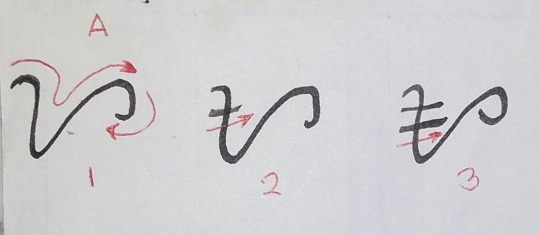
Then MA:
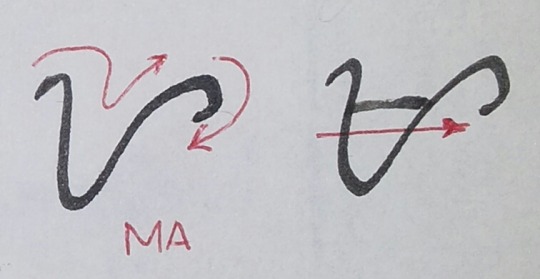
PA:
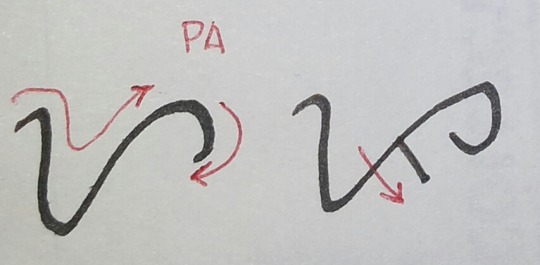
YA:
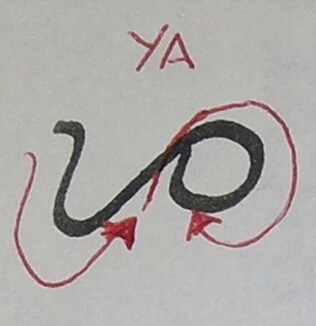
FA:

JA:

VA:

Group 2: E/I (more on that later), KA, DA, HA, RA, CA, QA, XA
I’ll start with HA because it’s a foundational stroke:
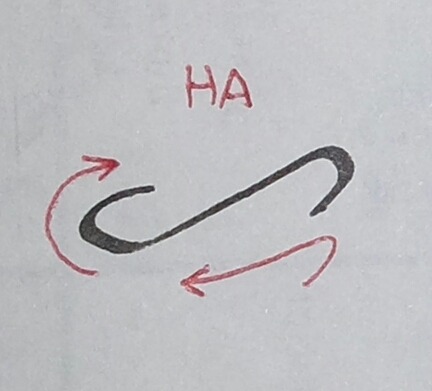
E:
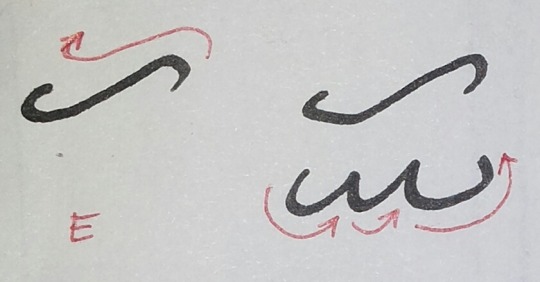
I looks structurally like E, but only with a vertical stroke on its hat.

It’s because originally, E and I were the same character and whether it should be read as a syllable from the E or I line depends on how the reader would read it and the dialect used in writing the words, like it’s a fill-in-the-blanks kind of thing. It’s also the same with O and U, so if you see that part yeah they look alike. This is also the reason why revisions on writing the E-I and O-U consonants were made, but that would be for a later part. Just be patient for now. =D
Ok, moving on, we’ll go to KA:
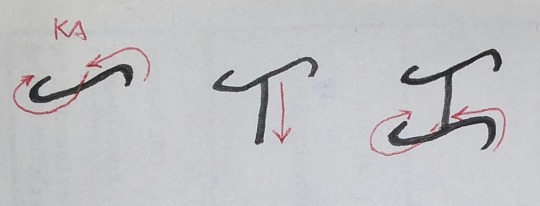
DA:
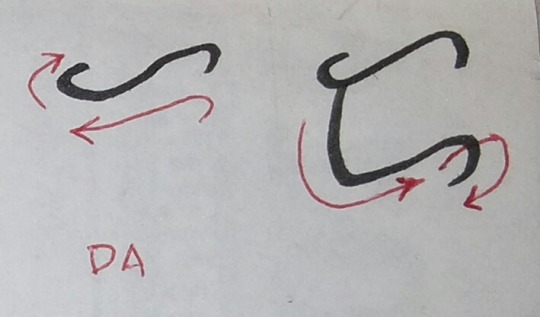
RA:

A short note on DA and RA: In olden times, these two were only one character, and are used interchangeably based on word usage, thus for words such as doon/roon, which both mean way over there one is used for passive and one is used directly (sorry not a speech comm person). This is also the case for marami and ang dami (both meaning “there are many/there is much” but one is active and one is passive. Madami is, IMHO grammatically incorrect. But then again, I’m not a speech comm person so sorry if these are wrong. I’m just saying).
CA:

QA:
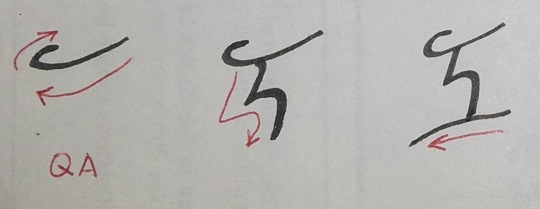
XA:

Group 3: O/U, GA, SA, ZA
Just like in E/I, O and U are also structurally similar. To make an O:
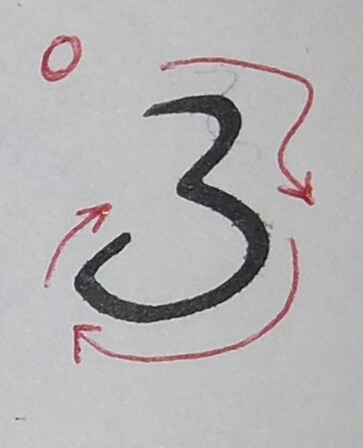
To make it a U, just put a vertical line on the right side:
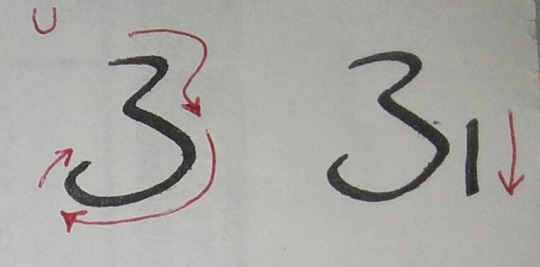
GA:
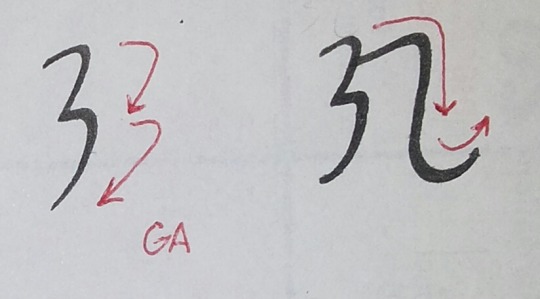
SA:

ZA:
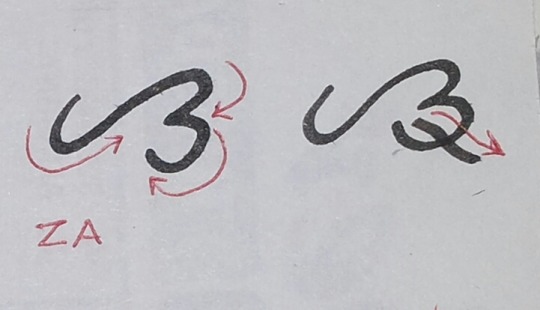
Group 4: LA, NA, TA, ÑA
I grouped this bunch based on having a downward stroke in the middle of the form. The initial strokes are written as a single stroke from left to right, like in the first group.
LA:

NA:
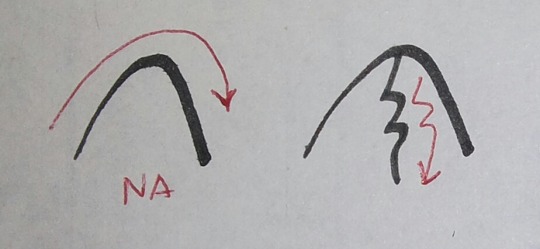
TA:

ÑA:
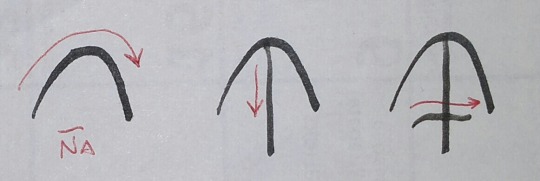
Group 5: I have no idea where to put BA, NGA, and WA so I just made a miscellaneous group lol but they deserve just as much love OK?
BA:
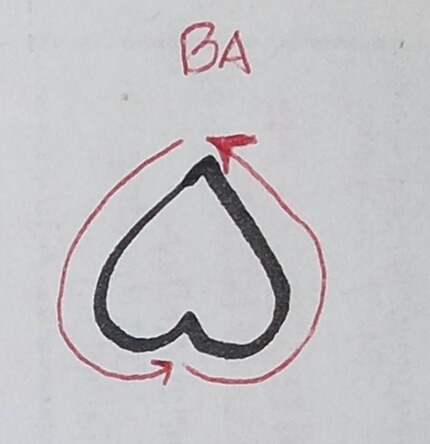
NGA:
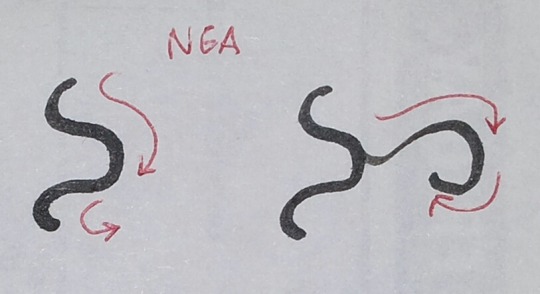
WA:

How the E, I, O and U lines are written:
In writing E, I, O and U (as in the case for the example below, which is GE, GI, GO, and GU), the original positions of the additional marks (such as the vertical lines for I and U) were kept but in order to differentiate E from I and O from U, the marks were made to be further distinct. For instance, GE is basically GA which has a horizontal line above it, while GI has a dot above it. As for GO, it has a dot below and GU has a horizontal line.

GI and GO can have either a hollowed dot like in the sample, or can also be filled like the samples below. It’s based on personal preference. Also I used G for the samples because it looks nice, fun to write, and most other examples of alibata on the internet use BA as their examples for this portion. Whoops, I meant, baybayin. XD
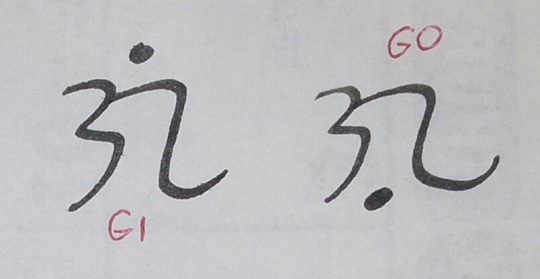
Vowel Killers: Invented by People who Needed It
I’m not entirely sure why vowel killer was the term used but it does tell it exactly what it does: it silences the vowels in the characters (because baybayin is composed of syllables) in order to make separate letters. It was invented by some Spanish friar who couldn’t properly write the native words because words that have consonants at the end were written incompletely. I.E. the word DOON (over there) was written as DO-O in baybayin. It was such a drag that he decided to introduce the Spanish/Latin alphabet by making baybayin characters that acted as alphabets, which is essentially killing all the vowels and leaving the consonant behind. So instead of using dots, the friar made a cross underneath the symbol which they called a kudlit (for obviously non-secular reasons), so that the words with consonant ends can be written and read as they were. As per the revision that was instated a few years ago, in order to make the baybayin a bit more secular, more forms of the vowel killers were made, which in my opinion look better than the original kudlit, because they look more organic with the forms.

As you can see in the pic of the letter G above, the first on the left is the original kudlit, which is shaped like a cross. The next one has an X, or sinawali (it’s literally based on the patterns of hard, woven rattan walls called sawali which look like X’s), the next one is called a kawil (sorry dunno where that came from) and the right-most one has a pamudpod (which may have come from the word “pudpod/pudpud” literally meaning grinding or repeatedly striking something on a hard surface or on a whetting stone till it disappears or becomes flat/dull, so pamudpod is the surface that makes the item pudpod like a used pencil or eraser. Do I even make sense anymore? Oh well, YOLO).
Stringing them All Together
My personal preference is using a kawil on horizontal writing (left to right) and using a pamudpod when writing vertically. I think the overall impact is better. But then again, it’s just my personal idea. Using any of the vowel killers are, like the filled or hollow dots on I and O are personal preferences, as long as there is consistency in usage.

If you can read the above and understand where the reference came from, you probably also call baybayin as alibata, and we should totally get some tea together. XDD It pretty much means “What is there, yonder?” smth idk but yeah, it sounds like that. Old and formal Filipino/Tagalog.

Langit - sky or heaven, Lupa - ground or earth, Araw - sun, and Buwan (or Bulan in Ilokano) - moon
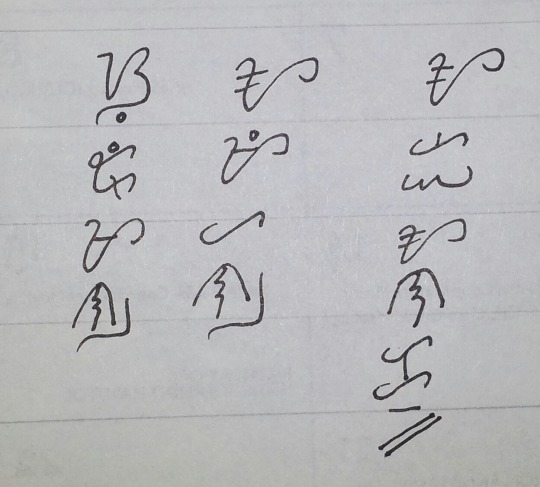
Soliman - A variant of the name Sulaiman/Solomon
Amihan - the northeast monsoon, the nice wind that brings in cool, dry air around November-March. Or if you watched the old and new Encantadia, she’s the protag. XD
The third sampler is a phrase (I ran out of space it was supposed to be a sentence), and vertical double bars are used to end the sentence. I just made them into diagonal slashes to make them look cool. Also I ran out of space. x__x It’s transliterated as a wailing mom looking for her child: Ai anaku (bunga) - Ah, my child (fruit). No space for fruit so it ain’t there.
Author’s extra rant note: Of course, some early Filipinos didn’t wanna use the kudlit due to being comfy with whatever they had at that time, but eventually they gave in. Fast forward to a century later and the baybayin was pretty much dead, as it was for the next 4 centuries or so. Romaji became the norm (except for some of the native tribes that have their own awesome writing systems), but then again some Filipinos didn’t forget it entire time, as many of the revolutionaries’ battle flags had the syllable KA, which is the first syllable of Katipunan, their group which can also be transliterated as “the entire group of the people who meet and come together”. I can’t say more because this is a long-ass post and it’s not about Philippine history. But we can talk about that if you want. Just hit me up with an ask. Warning though: I might just say “thanks for asking but please ask something else” lol j/k XDD
Writing Baybayin using a Straight-cut Calligraphy Pen/ Dip pens with Straight/Oblique Nibs
For this portion of the post, aside from posting pictures of the baybayin in black and white ink I would be pointing out that the techniques I used here are based on Western traditional calligraphy techniques used by scribes of the past, so some of the stroke patterns would be a lot different from the handwritten strokes above. But then again, if you clicked the link to get here straight away instead of reading the previous portions, well you won’t be having that much problems then. Also I will assume you already learned how to write baybayin so I’ll leave you at that. For the black baybayin, I used a calligraphy fountain pen with a 2mm straight-cut nib from the Visual Deck Set – Calligraphy box, not sure where you can buy it online but I bought mine at the National Bookstore because nobody wants to buy it. (Should’ve also bought the other calligraphy set while they’re on sale. LOL Just saying XDD). The surface is just the back of old calendars because I was just testing the strokes. For the white baybayin, I used a Speedball™ C-2 oblique-cut nib and for the ink, it’s glittery silver poster paint from Reeves™ (diluted with dH2O), and the surface is some random paper with nice surface and sizing which my father got from the office. (Apparently you can’t print anything on it so it aged well there until my father disturbed the papers’ sleep and brought them home. Now I ran out of both the calendar and the weird red paper so business is halted for a bit. XDD) Again, these are all based on how I write stuff so it’s pretty much a personal opinion, it’s not absolute but it certainly works for me so here you go.
Group 1
A:


MA:
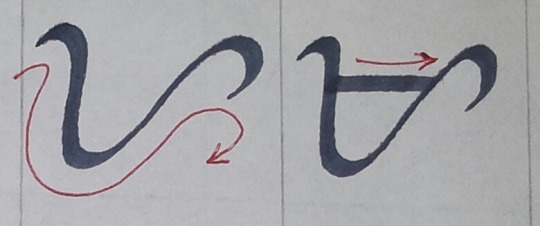
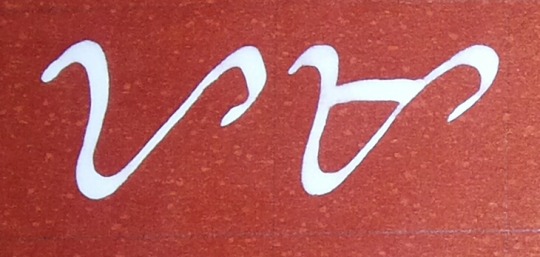
PA:


YA:


FA:
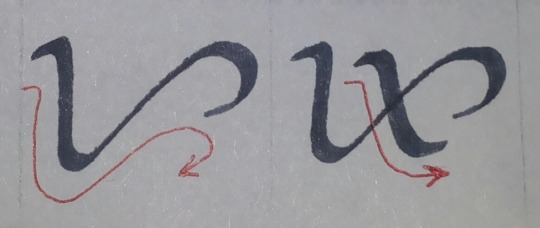
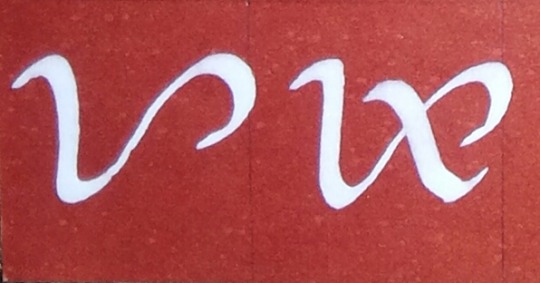
JA:
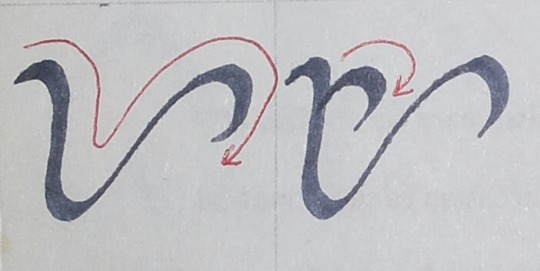

VA:
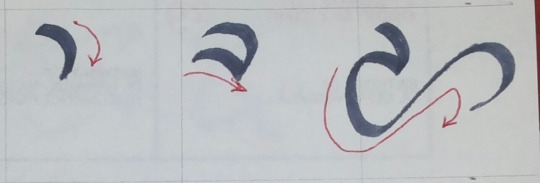
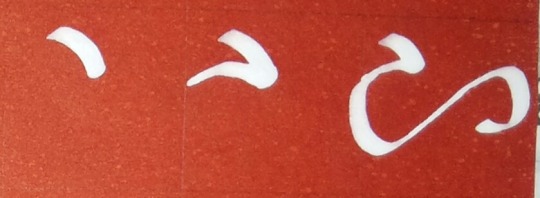
Group 2:
E/I: I’m just putting I here because E and I basically have the same strokes. To make E, just omit the final vertical stroke.


DA:
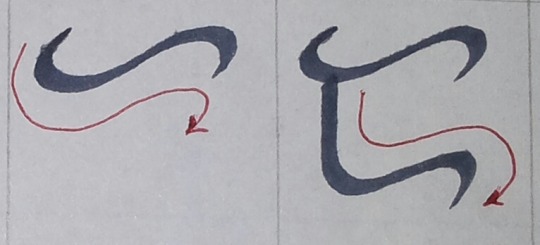
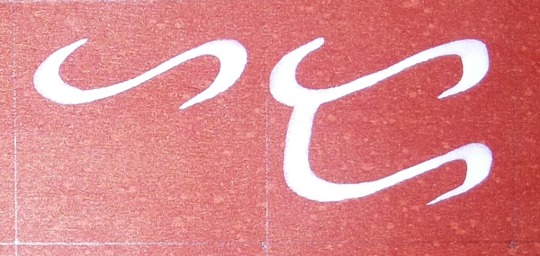
HA:
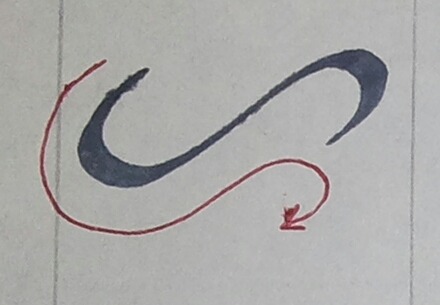
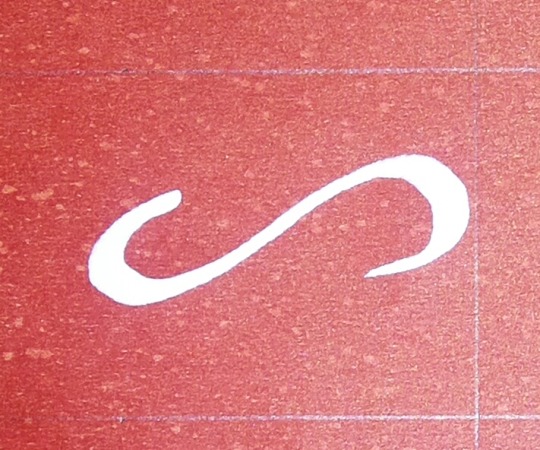
RA:

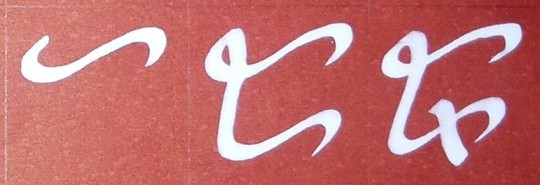
CA:


QA:


XA:


Group 3
O/U: Same with E/I, I just placed U here because O is practically the same, minus the vertical stroke on the right.


GA:
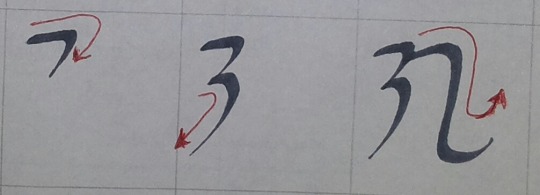

SA:
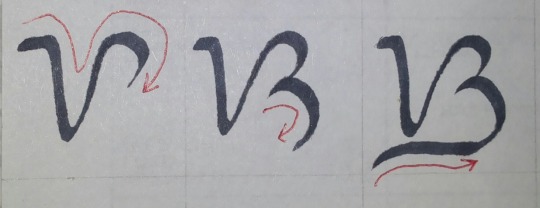

ZA:


Group 4
LA:
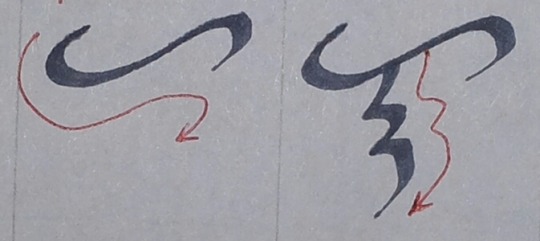

NA:


TA:
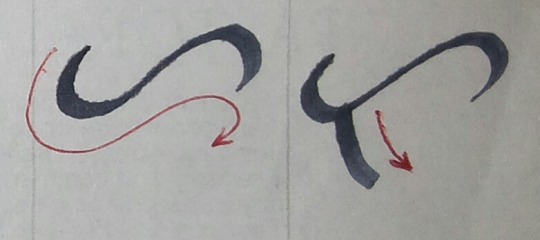

ÑA:


Group 5
BA:
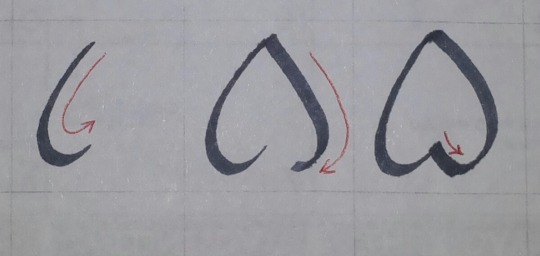

NGA:


WA:

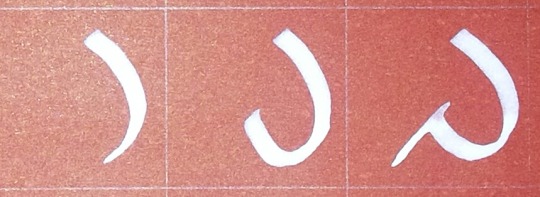
E, I, O, U Lines


Vowel Killers


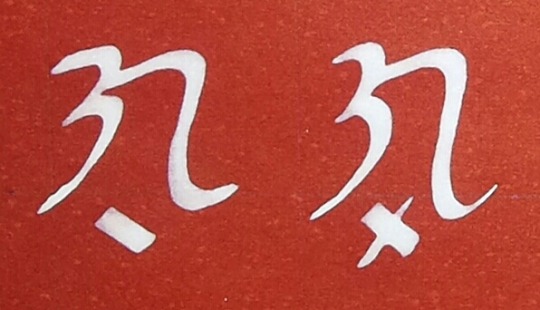
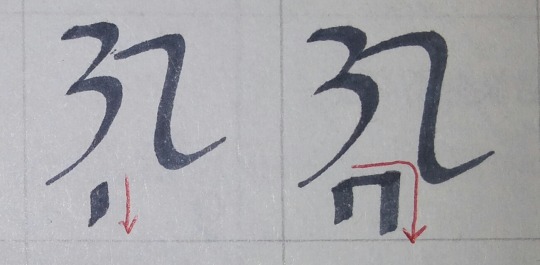
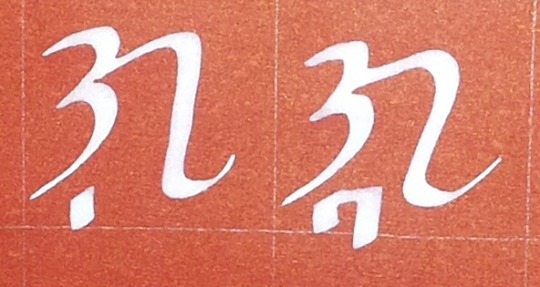


I didn’t make any full sentences or words because I ran out of nice papers, so maybe I’ll post some next time. Sorry. ._.
Author’s final note on writing using baybayin: I’m still on the fence in using the loan letters C, F, J, Ñ, Q, V, X, and Z because in my opinion apart from having redundancies with some other letters, they were just invented to spell out proper nouns that are foreign in origin. I wouldn’t even spell my full name using baybayin, except my nickname and would just rather use the Romaji/Latin Alphabet for ease. As for using baybayin to write foreign words, well, that can be as tricky as using kana to write foreign words. Both methods boil down to localizing a foreign word into how it would be pronounced based on the original language that the writing system belongs to. For instance, the Japanese waifu (as in “My waifu”) is the Japanized form of the English word “wife”, but because their spelling system is a bit different they had to estimate which kana would be suited to approximate how the word would be pronounced and in turn, be spelled. It is also the same case for some Filipino loan words that got Filipinized (and bastardized because long words are hard lol not kidding tho) such as the word istambay which originally came from “standby” and is now shortened to “tambay” which means “just loitering and doing nothing” or in how the young ones use it now: to hang out with friends (and probably just loiter and do nothing lol don’t kill me ok?). Thus, the usage of baybayin (or kana, or hangul, or Arabic because I think their writing is very lovely or whatever writing system you like that works as syllables more than letters) in writing words from another language would take extra steps such as following the rules of the written language or localizing the word first before writing them in whatever letters or syllables that you want. It’s like using what you have then making do with it/winging it out.
The End!!!! No just kidding. But it’s the last part.
To be honest there are a lot of stuff in the internet about baybayin so I’m not that entirely sure if what I have here is pretty much redundant or not. There are a lot of sites so just use your Googling skills to find what you need, although it may be a bit difficult for readers/users who simply try writing and not understanding the entire language so just use with caution. It’s hard to end up with THAT tough guy who has a kanji tattoo that actually spells “poop” instead of whatever it was supposed to be. I actually saw a guy sporting a tattoo that reads FUUBEN in Japanese, which translates to inconvenience. I lol deep inside but the guy seems happy with that so I just let him be.
Well, I hope this long-ass post helped you a lot, or at the very least the stuff made sense to you and it was worth your time reading. Please leave an ask if you have other questions, I’ll try to answer them if and when I can. Have a great day and may the force be with you. =D
#how to write baybayin#how to write alibata#how i write baybayin#baybayin handwriting#baybayin handwriting stroke order#baybayin calligraphy stroke order#baybayin calligraphy
6 notes
·
View notes
Text
Journal Entry #2

Struggling to identify ourselves in the midst of globalization, the past couple of years have seen a steady rise in the number of people advocating for and studying our very own baybayin. Asian countries usually have a distinct alphabet of their own. There is Korea’s hangul, Thailand’s akson thai script, the sanskrit, and many more distinct alphabets that quickly sets apart a country from the rest. Years of colonization have led us to believe that we do not have our own when in fact, there are just as many alphabets as languages spoken here in the Philippines.
I have always been interested in learning new languages, although I am not really fluent in any except for Filipino and English. I always start my learning journey by learning the alphabet first. To me, it was easier to learn how to read the words in the specific language’s alphabet first because it develops my reading comprehension faster. That is why when I first started learning Korean, I taught myself hangul first before moving on to actually getting my hands on learning the language itself.
The Learning Process
Surprisingly, hangul and baybayin had a lot of similarities. The characters of both alphabets depicted sounds instead of spelling. I found that when you spell words in baybayin, you spell it according to its pronunciation, which is exactly how you spell words in hangul. Both alphabets also had considerably lesser characters than the english alphabet. I found that memorizing the characters was way easier. Both alphabets were also pretty difficult to write. I don’t have the best handwriting in the first place, so having to write more elaborate characters was challenging my non-existent artistic abilities. In Baybayin, a single change in stroke would mean a different letter, which meant that I had to painstakingly write each letter as clear as I could.
While learning Baybayin, it made me wonder why it took me this long to learn the alphabet when it turned out to be pretty manageable. It did not have to be so deep but it made me re-examine who I am as a Filipino. Looking back on our discussion over the last week, however, it was pointed out that not conforming to the stereotypes of what a Filipino should be does not make me any less Filipino. But I couldn’t help but think that learning our culture should be an obligation and not a mere optional duty. The pace at which the world overturns scares me because if we don’t act now, we might lose sight of the culture we once had before colonization took place. However, this is not limited to Baybayin and language only. There are so many hidden treasures in our culture that we ought to learn and can be readily applied to modern times.
Baybayin in Contemporary Settings
But the popularity of Baybayin does not come without criticism. A few years ago, a bill was passed in Congress which seeks to declare Baybayin as our national writing system and require brand names and street signs to be written in the same script. This is probably because in other countries which have their own alphabets, most brands are written in the same alphabet along with their English names. In my head it sounded like a great idea, because why wouldn’t I want brand names to be written the same way? It revives a remnant of our culture and it puts our own distinctive twist to the way trade names are written in our country. The argument against it is pretty similar to why laws in our country are written in English instead of Filipino. Like what I’ve mentioned earlier, there are a lot of distinct languages in the country other than Filipino. Arguably, it might not be the widely spoken language in the country. Similarly, there are other Ancient Filipino writing systems that exist other than Baybayin. To put importance in one writing system only would mean that the other systems might not be given the same platform. It would be better to give light on all the writing systems instead of choosing just one because I also think that we cannot really rank all of the writing systems by order; each one is unique and deserving of the spotlight.
Kapayapaan.
I chose the word Kapayapaan after sincerely thinking of what the world truly needs right now. Because of the pandemic and all the other bad things that happened since the start of the year, we have been living in constant fear and anxiety. Only the universe knows how and when this will all end and in the meantime, we are stuck in a limbo that feels suffocating at most times. School is a great distraction from the onslaught of scary thoughts in my head but I wish we could navigate through these tough situations with a level mind. While a vaccine is important too, I want nothing more than a good night’s worth of sleep.
Taylor Swift said, “maybe this is wishful thinking, probably mindless dreaming,” and I agree. But it doesn’t stop me from manifesting peace for everybody.
0 notes